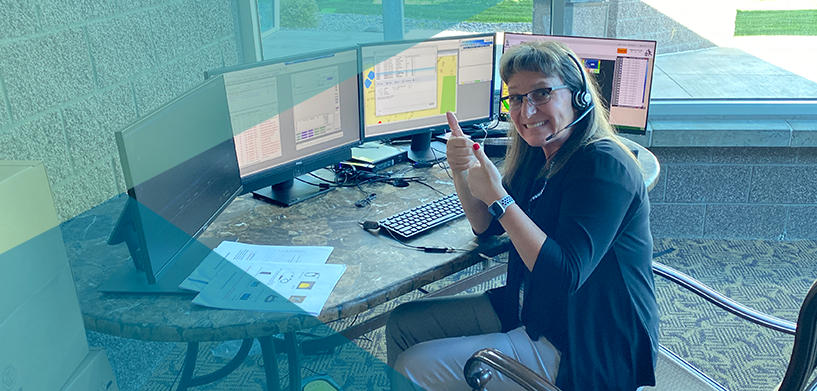If you work in a 911 call center, staffing shortages and massive overtime have become a fact of life.
So, when the COVID-19 pandemic hit in 2020, leaders at the 911 center in Kitsap County, Washington, a longtime Hexagon customer, knew something had to give. To that point, emergency dispatching wasn’t really a “work from home” job. Six screens and multiple computers aren’t just something you throw in a backpack and take to the house.
“What happens if our dispatch floor gets an outbreak because, you know, that’s the heart of any 911 center,” said Brandon Wecker, technical systems manager for Kitsap 911. “And we were trying to plan out what that would look like, because, like every 911 dispatch center in the country, we’re short-staffed, running lots of overtime already.”
It was “daunting, and a little scary,” Wecker said.
The first thing they did was retrofit a computer running Hexagon’s CAD to be a virtual desktop dispatchers could remotely access, along with setting up a radio-over-IP chatline and another computer for basic email and Microsoft Teams. They tried it in a “quarantine room” where dispatchers and call takers who were exposed, but not too sick to come in, could work their shift without having to expose anyone on the dispatch floor.
That evolved into an RV in the parking lot – a mobile command post borrowed from the sheriff’s office – and finally, a customized trailer complete with a bathroom that could serve as a mobile dispatch center.
Then, the federal CARES Act provided funding for remote working infrastructure and Kitsap County was able to purchase 10 separate workstations, with four monitors each – two for Hexagon’s CAD, one for radio and one for phone — to install in dispatchers’ homes. The setup was complicated, and had to be self-installed during COVID, so it came with a 25-page installation manual heavy with pictures.
But it worked, and even as COVID loosened its grip, Kitsap 911 continued to make good use of the remote stations. On the Fourth of July, the busiest night of the year for the dispatch floor, Kitsap 911 put the remote system to the test, with a few extra employees on standby at home with their remote kit.
“If our call load picked up, they would jump in and add support,” Wecker said. “I would expect we’re going to do the same thing this year in 2023.”
They’re even planning to test it with an employee who is moving to North Carolina, to see if it’s possible to work remotely from the other side of the country, Wecker said.
With staffing shortages plaguing 911 centers nationwide, Kitsap County has been a hot attraction at the Association of Public Safety Communications Officials (APCO) conference in Washington state, where they show others how they made remote dispatching work.
In fact, Wecker is doing a presentation on remote dispatching at HxGN Live Global 2023 in Las Vegas in June.
“I could see us in the long-term future, maybe we have three or four people directly in the building and then we have 8 or 9 remote,” Wecker said.
For more information about Hexagon’s public safety solutions, visit https://hxgn.biz/43nbNMP
















